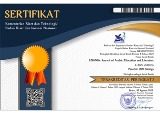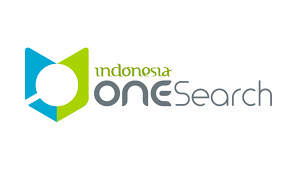Model Pembelajaran Bahasa Arab di Ma’had Al-Jami’ah Walisongo Semarang
Abstract
Keywords
Full Text:
PDFReferences
Arends, Richard I. Learning To Teach (terj.) Helly Prajitno Soetjito & Sri Mulyantini Soetjito, Belajar Untuk Mengajar. Yogyakarta: Pustaka Pelajar, 2008, cet. II
Bakar, Abu. Sinergi Pesantren dan Perguruan Tinggi, Studi Pengembangan Kurikulum Ma’had Sunan Ampel Al-Ali Malang. Disertasi, UIN Maulana Malik Ibrahim, 2012.
Joyce, Bruce, Marsha Weil dan Emily Calhon, Models of Teahing, (terj.) Achmad Fawaid & Ateilla Mirza, Models of Teaching (Model-Model Pengajaran). Yogyakarta: Pustaka Pelajar, 2011.
Khozin. Jejak-jejak Pendidikan Islam di Indonesia: Rekonstruksi Sejarah Untuk Aksi. Malang: UMM Press, 2006.
M. Ikhsanuddin, A. Shilaul Millah & Imam Machalli, Pengembangan Kurikulum Perguruan Tinggi Pesantren: Studi Pada Ma’had Al-’Aly Pondok Pesantren Situbondo, al-Munawwir Krapyak dan Wahid Hasyim Sleman, Jurnal Al-Nur/Vol. 5/No. 2, Desember 2013, h. 261-289.
Ma’had al-Jami’ah Walisongo. Buku Profil Ma’had Walisongo. tt. Belum diterbitkan
Ngalimun. Strategi dan Model Pembelajaran. Yogyakarta: Aswaja Pressindo, 2012.
Qomar, Mujamil. Menggagas Pendidikan Islam. Bandung: Remaja Rosdakarya, 2014.
Shokah, Umar as-Syadudin, Problematika Pengajaran Bahasa Arab dan Inggris. Yogyakarta: Nur Cahaya, 1982.
Zainiyat, Husniyatus Salamah, Model Kurikulum Integratif Pesantren Mahasiswa dan UIN Maliki Malang, Ulumuna: Jurnal Studi Keislaman/Vol. 8/No. 1, Juni 2014, h. 139-158
DOI: https://doi.org/10.18326/lisania.v2i2.102-120
Refbacks
- There are currently no refbacks.
Copyright (c) 2018 LISANIA: Journal of Arabic Education and Literature
View My Stats







